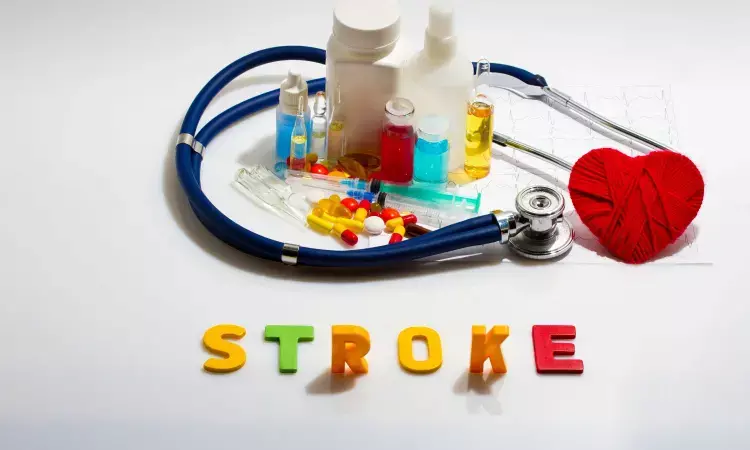- Home
- Medical news & Guidelines
- Anesthesiology
- Cardiology and CTVS
- Critical Care
- Dentistry
- Dermatology
- Diabetes and Endocrinology
- ENT
- Gastroenterology
- Medicine
- Nephrology
- Neurology
- Obstretics-Gynaecology
- Oncology
- Ophthalmology
- Orthopaedics
- Pediatrics-Neonatology
- Psychiatry
- Pulmonology
- Radiology
- Surgery
- Urology
- Laboratory Medicine
- Diet
- Nursing
- Paramedical
- Physiotherapy
- Health news
- Fact Check
- Bone Health Fact Check
- Brain Health Fact Check
- Cancer Related Fact Check
- Child Care Fact Check
- Dental and oral health fact check
- Diabetes and metabolic health fact check
- Diet and Nutrition Fact Check
- Eye and ENT Care Fact Check
- Fitness fact check
- Gut health fact check
- Heart health fact check
- Kidney health fact check
- Medical education fact check
- Men's health fact check
- Respiratory fact check
- Skin and hair care fact check
- Vaccine and Immunization fact check
- Women's health fact check
- AYUSH
- State News
- Andaman and Nicobar Islands
- Andhra Pradesh
- Arunachal Pradesh
- Assam
- Bihar
- Chandigarh
- Chattisgarh
- Dadra and Nagar Haveli
- Daman and Diu
- Delhi
- Goa
- Gujarat
- Haryana
- Himachal Pradesh
- Jammu & Kashmir
- Jharkhand
- Karnataka
- Kerala
- Ladakh
- Lakshadweep
- Madhya Pradesh
- Maharashtra
- Manipur
- Meghalaya
- Mizoram
- Nagaland
- Odisha
- Puducherry
- Punjab
- Rajasthan
- Sikkim
- Tamil Nadu
- Telangana
- Tripura
- Uttar Pradesh
- Uttrakhand
- West Bengal
- Medical Education
- Industry
Greater body roundness index among diabetes patients associated with Increased stroke risk: Study

A new study published in the journal of Diabetes Research and Clinical Practice showed that higher stroke risk is associated with greater body roundness index (BRI), particularly in people with diabetes and prediabetes. In stroke prediction, BRI performed better than other adiposity markers, demonstrating its usefulness for risk stratification in people with glucose impairment.
Stroke is one of the leading causes of mortality and permanent disability globally, posing serious public health issues, especially for older adults. Developing successful preventive measures in clinical settings requires an accurate assessment of modifiable risk variables. The development of the BRI, a new metric intended to more precisely estimate body fat percentage and visceral adipose tissue, is the consequence of recent advancements in anthropometric measurement.
In Chinese populations, the body roundness index (BRI), a new anthropometric indicator of obesity, has not been well studied for stroke prediction across various glucose metabolism statuses (GMS). Thus, this study investigated the relationship between BRI and the risk of new-onset stroke in middle-aged Chinese individuals.
A total of 7,969 individuals from the China Health and Retirement Longitudinal Study (2011–2020) were examined. To investigate the relationship between BRI and stroke, this study used sensitivity analyses, limited cubic splines, propensity score matching, and Cox regression. The predictive ability of BRI was compared to various anthropometric indicators across GMS categories using receiver operating characteristic (ROC) analysis.
After controlling for confounding factors, baseline BRI levels were strongly correlated with stroke risk (HR = 1.78, 95% CI 1.30–2.43, P for trend < 0.001). Regardless of whether blood glucose status was viewed as a fixed variable or a longitudinal dynamic trajectory, elevated BRI was consistently associated with a higher risk of stroke across all Cox models, with the strongest associations seen among people with prediabetes (Pre-DM) and diabetes mellitus (DM) in comparison to those with normal glucose regulation (NGR).
In comparison to other measures, BRI demonstrated superior stroke prediction [area under the curve (AUC) = 0.678], with improved accuracy in the Pre-DM group (AUC = 0.716) as opposed to the DM group (AUC = 0.671). Additionally, BRI and biomarkers together may increase the accuracy of stroke prediction.
Overall, regardless of whether blood glucose level was seen as a fixed variable or a longitudinal dynamic trajectory, this study emphasizes the critical importance of the BRI as a predictive biomarker for stroke risk, especially in people with prediabetes and diabetes.
Source:
Hongwei Liu, Fei Xu, Minheng Zhang, Xuan Chen, Haixia Fan, Miaomiao Hou., Association between body roundness index and new-onset stroke risk in middle-aged and older adults with varying glucose metabolism status: A longitudinal study using CHARLS data., Diabetes Research and Clinical Practice., 2025., https://doi.org/10.1016/j.diabres.2025.112367
Neuroscience Masters graduate
Jacinthlyn Sylvia, a Neuroscience Master's graduate from Chennai has worked extensively in deciphering the neurobiology of cognition and motor control in aging. She also has spread-out exposure to Neurosurgery from her Bachelor’s. She is currently involved in active Neuro-Oncology research. She is an upcoming neuroscientist with a fiery passion for writing. Her news cover at Medical Dialogues feature recent discoveries and updates from the healthcare and biomedical research fields. She can be reached at editorial@medicaldialogues.in
Dr Kamal Kant Kohli-MBBS, DTCD- a chest specialist with more than 30 years of practice and a flair for writing clinical articles, Dr Kamal Kant Kohli joined Medical Dialogues as a Chief Editor of Medical News. Besides writing articles, as an editor, he proofreads and verifies all the medical content published on Medical Dialogues including those coming from journals, studies,medical conferences,guidelines etc. Email: drkohli@medicaldialogues.in. Contact no. 011-43720751


